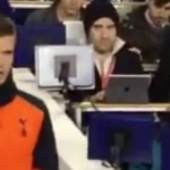It has taken a while – almost four years, in fact – but Isco is finally developing into a crucial first-team player for Real Madrid, just in time for Saturday's Champions League final against Juventus.
Having signed from Málaga in the summer of 2013 following a string of outstanding displays for Spain at the European Under-21 Championship, Isco looked to have the potential to take the Bernabéu by storm and become one of the best creative midfielders on the continent.
But, for the most part, the Spaniard has had to settle for a bit-part role with Los Blancos, often losing out to more established stars such as Luca Modrić, Toni Kroos and Gareth Bale, while also being hampered by the lack of a No.10 role – unquestionably his best position – within Madrid’s preferred 4-3-3 formation.
His first two seasons in the capital saw him rack up a respectable and relatively healthy amount of game time for a developing youngster, with 23 and 26 La Liga appearances respectively. But subsequent campaigns have seen Isco’s involvement wane, sparking rumours of an exit for the Premier League.
Even throughout that period, though, the 19-cap La Roja international remained incredibly productive. His nine La Liga goals and four assists meant he was directly involved in a goal every 156.07 minutes in the 2014/15 season, and one every 182.6 minutes the following term.
Since taking charge of Madrid in January 2016, Zinédine Zidane has largely kept faith with a simple and effective 4-3-3 system, save for a couple of dalliances with 3-5-2 and 4-4-1-1. With Kroos, Modrić and Casemiro the preferred midfield combination, and Cristiano Ronaldo, Karim Benzema and Bale the untouchable attacking trident, Isco - along with Colombian star James Rodríguez - has found himself the odd man out.
At least that was the case until recently. An injury to Bale last month forced Zidane into a rethink and a reshuffle. Encouragingly for Isco, the manager elected to call upon the Spaniard rather than Rodríguez -- who will now almost certainly leave the club in the summer -- and accordingly rearranged his pieces to ensure Bale’s replacement did not have to be a square peg in a round hole.
Rather than drop Isco straight into the right-wing berth that Bale was vacating, Zidane set his team up in a 4-3-1-2 formation, allowing Isco to play as a No.10 behind two central strikers. It was a subtle yet highly impactful switch.
From there, as the link between midfield and attack, Isco was the star of both legs of Los Blancos’ Champions League semi-final triumph over local rivals Atlético Madrid. In the first encounter at the Bernabéu, the former Málaga man was almost flawless in his passing, picking out a white shirt with a staggering 98.3 per cent of his attempts and helping Real produce arguably their best performance of the season in a 3-0 win. In the return leg, Isco scored the away goal that stamped out any hopes Atleti had of staging a comeback after they had raced into an early 2-0 lead.
So impressive has Isco’s form been over the last month that, not only are there no longer any rumours of his departure from Madrid, but many now believe that Bale may find it hard to regain his starting place next term. His presence in a central attacking midfield role has not only given Madrid tremendous balance and allowed them to control matches more effectively, it has also aided Ronaldo in what appears to be the next logical evolution of his game.
The Portuguese superstar has always favoured starting wide on the left, where he can more easily drift into central scoring positions without drawing the attention of opposition defenders. However, at 32, the former Manchester United man is far less active out wide, and now takes up residence centrally on a regular basis, with Benzema often dropping wide to cover in the defensive phase.
Though he may no longer be able to carry the ball over any great distance or produce pitch-length sprints to spring rapid counter-attacks, Ronaldo is still an incredible finisher with either foot and a powerhouse in the air. It makes perfect sense that, as he ages, he transforms into a conventional centre-forward; Isco’s presence and Zidane’s latest tactical switch have made that possible.
With four goals and two assists in his last six starts, Isco is producing the best form of his career to date. No player will be carrying more momentum into the Champions League final than the Spanish playmaker.
















